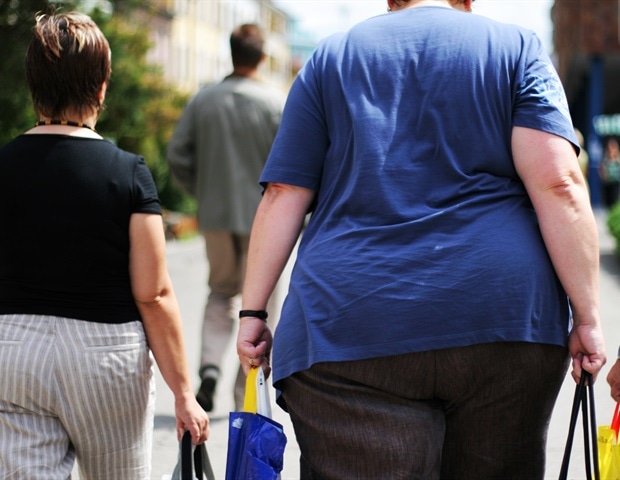New research from Scotland published in Anaesthesia (a journal of the Association of Anaesthetists) shows the increased risk of severe maternal sickness/complications (morbidity) is associated with a range of risk factors including increasing maternal age and levels of obesity, and also previous Cesarean section.
The study, by Dr Nazir Lone, University of Edinburgh, Edinburgh, Scotland, UK and colleagues, suggests the increasing prevalence of all these risk factors could have combined to stall decades of progress in reducing maternal mortality in the UK. However, even though maternal mortality is no longer reducing (although the UK rate is low by international standards), nor is it going up – and the authors believe a possible explanation for this is that UK maternity services are continually adapting to meet the needs of this increasingly complex pregnant population.
The number of women dying during pregnancy and childbirth in the UK is at an all-time low. Consequently, enquiries into maternal death have limited power to improve maternal care, whereas measures of severe – but usually non-lethal – events during pregnancy and the puerperium (the period of about six weeks after childbirth during which the mother's reproductive organs return to their original non-pregnant condition) – may continue to inform care in the UK. A composite of various individual indicators of maternal ill health (or morbidity) is up to 100 times more frequent than maternal death, and thus interventions that can impact these indicators would provide opportunities to intervene to reduce both morbidity and mortality.
In this study, the authors analyzed 17 diagnoses and 9 interventions (including critical care admission) as a composite measure of severe maternal morbidity for pregnancies recorded over 14 years in Scotland. Any woman presenting with any of these conditions or needing any of these interventions was considered seriously ill.
There were 762,918 pregnancies, of which 7947 (10 in 1000 pregnancies) recorded 9345 severe maternal morbidity events, with 2802 episodes of puerperal (post-natal) sepsis being the most common (30%). Severe maternal morbidity incidence almost doubled from 9 in 1000 pregnancies in 2012 to 17 in 1000 pregnancies in 2018, due in part to puerperal sepsis recording.
The risk of severe maternal morbidity was higher for older women, with those aged 40 years and over 44% more likely and those 35-39 years 22% more likely that those aged 25-29 years to experience it. Women with severe obesity (BMI of 40 kg/m2 or higher) were 32% more likely to experience severe maternal morbidity than those women in the normal weight range (BMI 18.5-24.9), while women in the less severely obese range (BMI 30-40) were 13% more likely than women of normal weight to experience it.
Women having a multiple pregnancy were 2.4 times more likely than women carrying a single baby to have severe maternal morbidity, and those with three or more pre-existing health problems were 4 times more likely to have it than women with no health problems. Women who had required a previous Cesarean delivery were 52% more likely to have severe maternal morbidity than those who had not.
The authors say: "The increasing prevalence of these factors in UK mothers might stall historical reductions in maternal mortality and will increase the need for healthcare during pregnancy and childbirth." They explain that one quarter (26%) of pregnant women had obesity (BMI>30) at the time of antenatal booking in 2021, while over half of pregnant women in Scotland had overweight or obesity (BMI >25) at the time of booking in 2021. The proportion of pregnant women with obesity has increased from 1 in 5 (20%) in 2011 to 1 in 4 (26%) in 2021.
Women with severe maternal morbidity experienced greater adverse events than those without, including longer hospital stays following delivery (11% versus 3%), a greater frequency of stillbirths (1.7% versus 0.4%) and higher maternal death rates (365/100 000 pregnancies vs 1.6/100 000). Across all the pregnant women combined, the mortality rate was 5.4 per 100,000 pregnancies (this figure is lower than the 9.7 per 100,000 recorded in UK's national figures [see link below] but as the data are recorded differently the two numbers are not directly comparable).
The authors conclude that: "Severe maternal morbidity accompanied 10 in 1000 (1%) pregnancies in Scotland. Morbidity was independently associated with maternal age; BMI; pre-existing health problems; previous smoking; previous cesarean section; multiple pregnancy; and mothers born in Africa, Asia or the Middle East. Morbidity was associated with delayed hospital discharge, stillbirths and maternal deaths."
The identified risk factors are increasing in frequency and the authors note that those that are modifiable, such as obesity, require public health interventions on a population level, and are unlikely to change quickly. The situation around previous C-sections is complex as it includes some needed medically to reduce risk to the mother and baby due to older maternal age, increasing levels of obesity and pre-existing health problems.
They add that: "The reality today is that the increasing complexity of health care needs of women during pregnancy means that they may need greater levels of care during pregnancy and delivery. The fact that maternal mortality has stalled, rather than increased, suggests maternity services are adapting to these many challenges. However, our study may allow us to develop better systems to identify women at risk of severe maternal morbidity, so that maternity services can provide more personalised care targeted to those at higher risk."
AAGBI
Posted in: Medical Research News | Women's Health News
Tags: Abdominal Pain, Amniotic Fluid, Amniotic Fluid Embolism, Baby, Bladder, Blood, Cardiac Arrest, Cell, Childbirth, Coma, Critical Care, Dialysis, Eclampsia, Embolism, Frequency, Health Care, Healthcare, Hospital, Hysterectomy, Intensive Care, Mortality, Obesity, Pain, Pregnancy, Psychosis, Public Health, Renal Failure, Research, Sepsis, Smoking, Status Epilepticus, Thrombosis, Tracheostomy, Uterus, Wound
Source: Read Full Article
